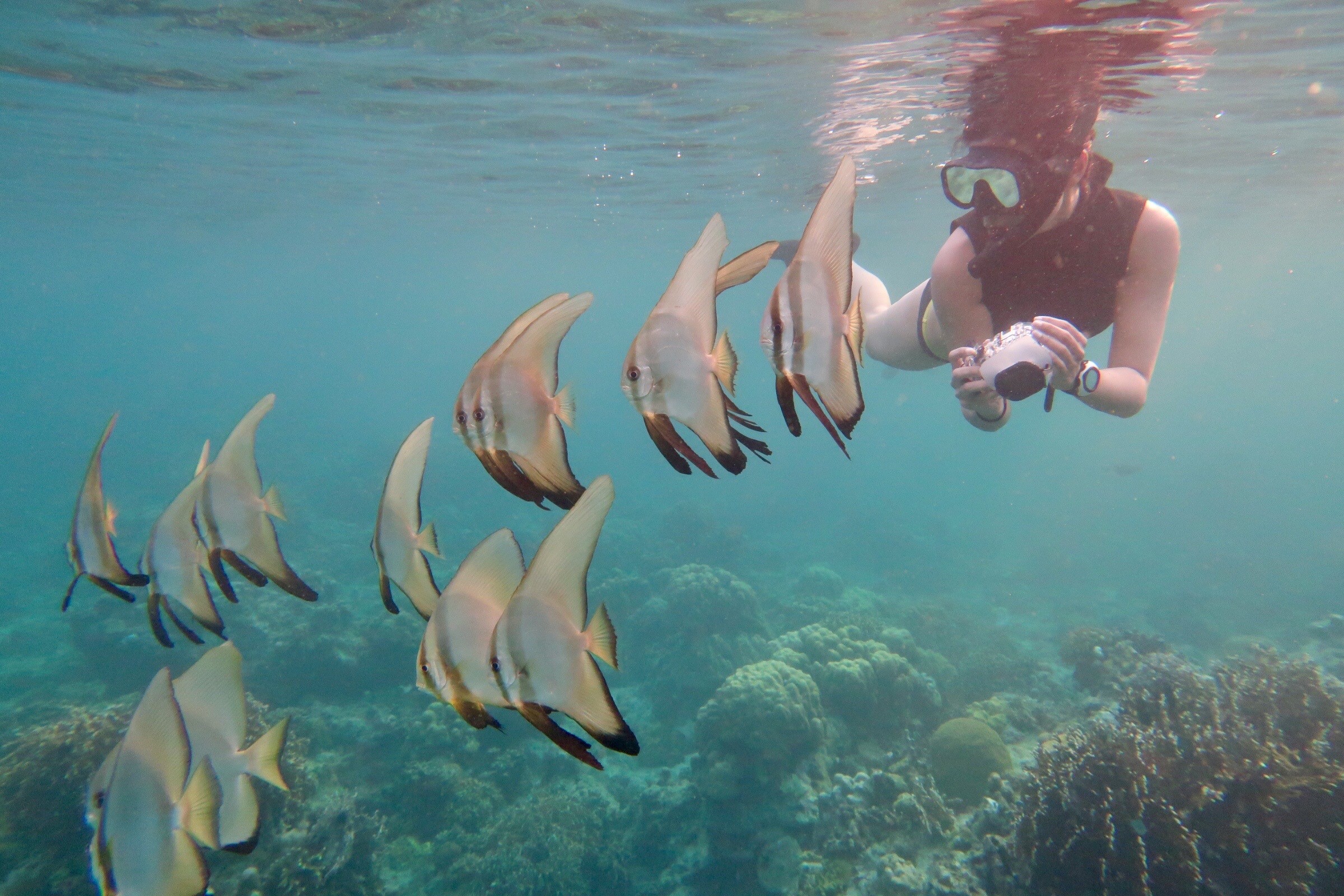
Conservation is everybody’s business
A trustee Q&A with Communities for Nature board secretary Sef Carandang.

Photo credit: Sef Carandang
Dialing in from a London morning to late afternoon in Manila, we sat down with Communities for Nature trustee Sef Carandang for the first in a series of blogs introducing the board and its impressive array of expertise.
Currently working as a gender specialist for the United Nations Development Programme (UNDP) in the Philippines, Sef has almost two decades of experience in development work, including a position on the board of Communities for Nature’s Actions for Community and Environment partner The Philippine Reef and Rainforest Conservation Foundation Inc (PRRCFI).
Can you tell us a bit about your career background and current roles outside of your work as a Communities for Nature trustee?
The UN is my day job, but before I started working for the UN I worked for other development agencies. It has always been my field – I have worked with Canadians, Americans, Germans. They all have different development programmes here in the Philippines.
In the beginning I was just taking on projects in health, agriculture, livelihood – a mix, because I was figuring out what I wanted to do. I then decided that I wanted to focus on things that I truly cared about, and at the same time felt were important for my country, so over the last 6 or 7 years I have been pickier choosing projects.
One area I’m particularly passionate about is the environment, and with it marine conservation. We are a country of 7,000 islands, so it makes a lot of sense. And on a more personal note, I’m a scuba diver and a free diver – in a past life I think I was a fish! And that is why I got so involved with Danjugan Island and joined the board of PRRCFI. My projects with the UN are also now very environment related.
What does the role of gender specialist mean in practice?
Any project we design and implement will inevitably impact both men and women. We can’t assume that impact is the same, so we make sure that both men and women are participating and feeling no adverse effects. It’s really the social side of any development project. Some call it gender and development, but for me, it’s really just ensuring that people are taken care of.
It seems like there is a growing understanding in the environmental movement that you can’t just look at issues like carbon or biodiversity in isolation, and that you also need to ensure that people have sustainable jobs – which is something well captured in Communities for Nature’s approach.
I always say that conservation takes communities. Scientists have a role to play, but you also need people that are working in communities and looking at the social aspect. The communities need to be part of the solution, be aware of the problems and play their part in conservation.
That’s how you make it an intergenerational thing rather than just a movement for a pocket of people.
Exactly.
Going back to your career in development, is that something you studied at university?
No, I studied economics! The development work I fell into accidentally – I had no idea there was such a large sector of developed countries conducting these programmes in the Philippines. I discovered it via an ad for an assistant at the Canadian International Development Agency (as it was called at the time). That’s how I got my foot in the door. I worked with one of the Canadian secretaries that was based here in Manila. From there it was really word of mouth. Once your project is over and you’ve done a good job, people will recommend you for the next one.
How did you first become involved with Communities for Nature’s work?
Rhoda and I are both trustees of PRRCFI, and I know she’s wanted to do something like this for a long time. Sometime last year she told me she was finally going to have time to do it and asked if I would like to join the board, because she told me she thought I could really bring a lot to it.
What attracted you to the role?
It’s another opportunity for me to apply all that I have learnt and make more of a difference.
At this point I have been in development work for almost 20 years, and so I feel that I have something to bring to the table.
I was also really attracted to the idea of bringing the work that we’re doing on Danjugan and with our partnered communities in Negros to other places in the Philippines. I see Communities for Nature as a vehicle to help them and hopefully other communities across the globe as well.
And Rhoda and Kaila (another Communities for Nature trustee)– these two women are amazing, and I love working with them. So that’s also why, because of these two!
What do you feel are the strengths of Communities for Nature?
In many cases, usually when a project is funded externally, there is this notion that there is nothing that the communities are bringing to the table – which is totally wrong. With Communities for Nature, it’s a real partnership where both the funders and the communities are coming together to do something that will benefit both. It’s so exciting to see, and a model that I think should be practiced elsewhere.
So would you say that is your main focus and aim as a trustee?
It’s acting as the bridge, and ensuring that things are aligned with what the funder is looking to support and what the communities need.
Do you have a view on the long-term future of the charity and what it can achieve further down the line – both in terms of projects linked to Danjugan Island, and beyond?
It’s Rhoda’s dream that we are one day supporting communities all over the world and getting funding from all kinds of companies, and I support her on that, but I guess we have to start one community at a time.
Even PRRCFI – we are a small foundation, not like those big NGOs out there. Our strength lies in our network and partners, the social capital we have built over the years with our guests as an eco-tourism destination.
Because ultimately conservation is everybody’s business. Everybody can practice sustainability or conservation no matter the field they are in or where they are. It’s only when we are able to involve other people as they understand this that we become successful.
For example, for the longest time Danjugan was quite exclusive, only for scientists going to do research. It was to protect it, because if you tell the whole world there is the fear they will come and “destroy” the island. But I think we have to open up to protect. If we make everybody feel they have a responsibility, they become a part of something.
But you do also want to reach out to those who maybe don’t understand it as much. At the end of the day, if we are only talking to each other, it’s like preaching to the choir.
What do you feel the benefits are for corporate supporters and communities in engaging with Communities for Nature?
It’s about mutual benefit, and I hope that both groups see it that way. We are connecting people from two sides of the globe. Even if they are from different communities and have different experiences, there is something common there.
We would also love to have our partners come and visit the sites and engage with the communities in person. It’s empowering for them to receive guests and have the opportunity to tell their story.
There are different companies who will have a preference on how to give back, but for those like LMAX Group, leaning towards environmental and community support, I think Communities for Nature is perfect.
Are there any final thoughts you would be keen to share?
My message from earlier – both groups are benefitting from these partnerships, and both have something to bring to the table. It’s not just one giving to the other. So I really see that as what Communities for Nature is brokering: true partnerships.